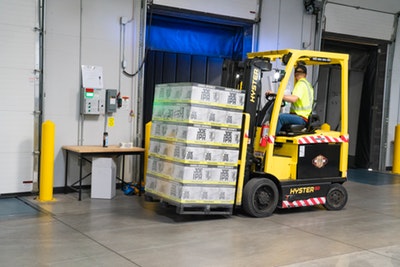The Pitfalls To Avoid When Starting An Import Business

We’ve all seen the headlines: China is the next emerging business superpower. As an entrepreneur, you might want to get in on the action from the very beginning.
Eastern economies are growing faster than their Western counterparts and are seeing the industries of manufacturing and exports grow at an astronomical pace. Many business-minded individuals see the odd gap in the market for an import startup.
Imagine sourcing a product from South Korea, Taiwan or China, importing it to your home nation and then selling it on for double, triple, or even quadruple the price you paid for each unit. Sounds like business nirvana, so why aren’t more people doing it?
The truth is, it’s not as simple as it first appears.
Finding Your Market

It’s all very well and good knowing that you want to import, but what are you going to import? There’s no point heading online to take a look at the cheapest items to ship to your home country only to discover that there is zero market for them.
You need to flip this concept on its head and have a product in mind before you try and source items. You may be after something fairly time to limit that you know will be successful. In Olympic years, sports clothing and memorabilia tend to see a sharp surge in sales. At the same time, a successful movie can spur an interest in a toy or model.
If you want something that provides more consistent long-term sales, you need to conduct your own market research. Perhaps people need energy saving bulbs, a particular wheel for their skateboard or ink for their pen. You need to source the product, import it and then sell it on to the end user for a profit.
Suppliers

Many novice importers simply locate the first supplier they see selling the product they wish to import, order a thousand units and then fail.
Why?
Because they’ve ordered too much without testing the market and they haven’t vetted the supplier. By heading to a company like leelinesourcing, you can outsource the responsibility of sourcing reputable suppliers to mitigate and reduce your business risk.
This frees you up to concentrate on the advertising and marketing of your product rather than getting bogged down in the supply chain.
Only order sparsely to begin with, so you don’t commit too much of your own hard earned cash. There’s nothing worse than having a garage full of stock that is impossible to shift.
Your money is tied up in unsellable items, and you don’t have further cash flow to keep your import business afloat.
Selling
The most obvious place to sell is over the Internet. While you might want to secure a pitch down at your local market, most of your potential customer base will be online.
Head to eBay and Amazon to establish yourself as a reputable seller of products that people need and want. Build up a sound reputation, provide excellent customer service and deliver on time.
Starting an import business is tough; however, if you avoid these pitfalls, you have every chance of making your startup a success.






